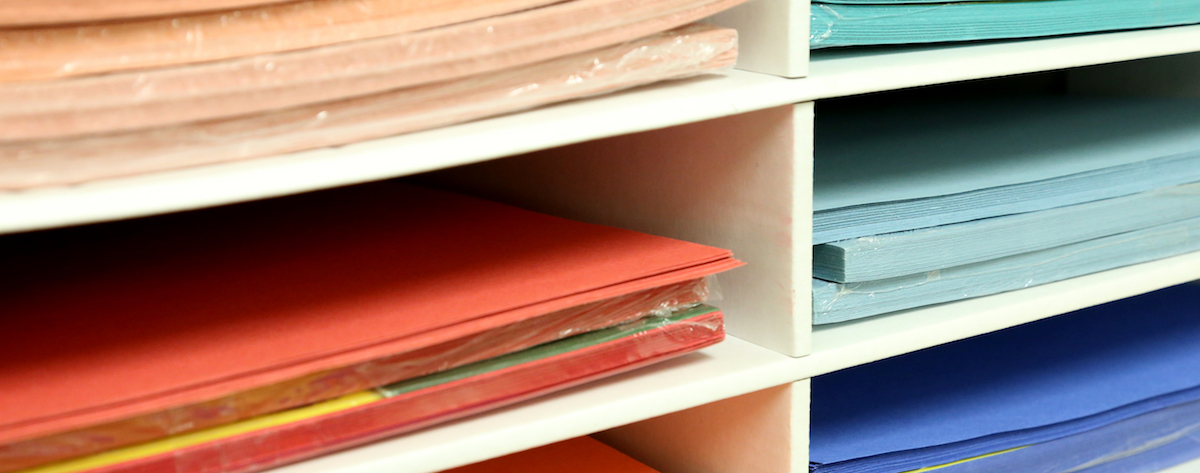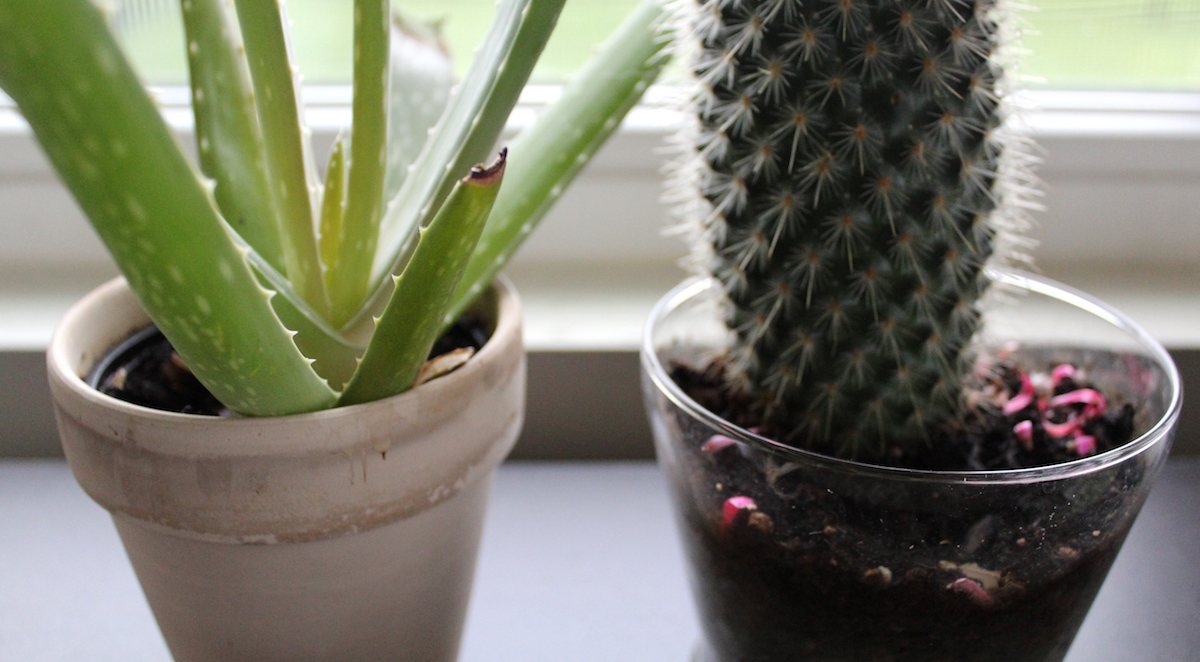School’s (almost) out for summer! However, before you can actually celebrate the summer season of reflection, relaxation, and rejuvenation, you probably have some work to do.
The end of the school year is full of important tasks to be completed in an art room, but it can be difficult to recall everything when you have vacation on the brain. Below is a comprehensive list for the end of the year. Use it to stay organized in the weeks leading up to your last day of school.
Be sure to download a copy so you can check things off as you go!
The Art Teacher’s Ultimate End-of-the-Year Checklist
Cleaning and Purging

With beautiful weather and mere days to go until a much-deserved break, it can be tough to find the motivation to clean. However, every moment you spend preparing your room for summer will make you a bit more organized come fall. Moreover, your efforts will not go unnoticed by your custodians, and those are a great group of people to have in your corner!
In the Classroom
- Clean off your desk area.
- Clean out and organize storage spaces.
- Purge unnecessary items from filing cabinets and flat files.
- Organize and label drawers and cabinets.
- Wash out the sinks.
- Wipe down all tables and counters.
- Unplug and cover computers and other tech per your tech department’s instructions.
Out of the Classroom
- Take down or cover bulletin boards to prevent fading.
- Remove leftover food and drinks from the lounge fridge.
- Empty your mailbox in the work room.
Digital
- Clean out your email. Delete any unnecessary correspondence.
- Clean off your virtual desktop. Move important files to an external hard drive or to Google Drive for safe keeping.
When you are finished, take a few extra minutes to create a physical map of your room furniture and tape it to your door. This will ensure furniture moved to deep clean or wax your floors it will be put back in the right place!
Supply Maintenance
Regardless of the level you teach, there are always supplies to be sorted and prepped for summer storage. This list can be daunting, but the workload shouldn’t fall solely on you.
As we teach artistic behaviors, one important component should be the care and maintenance of supplies. Students gain a greater understanding of this process if we let them participate. Allocate 15-20 minutes of focused supply care per class during the last week of school. Or, post a master list of supply care jobs and let students choose tasks with which to assist.
Paint
- Combine bottles of the same color.
- Remove pump tops and wash them. Cap the remaining gallon bottles.
- Make sure any tubes of paint are closed tightly.
- Fully dry all tempera cakes before stacking.
- Refill watercolor pans.
- Re-wash brushes and store them upright for the summer.
Markers

- Sort different types of markers into different bins.
- Test permanent markers. Discard any that are dry.
- Test specialty markers. Discard any that are dry.
Glue

- Combine half-empty bottles.
- Unclog tips of remaining bottles.
- Make sure all bottles/containers are completely sealed before storing.
Crayons/Oil Pastels
- Create “you must be this tall” charts and discard anything that doesn’t meet your requirements.
- If desired, peel crayons that are too short to use for other projects.
Pencils/Colored Pencils
- Create a “you must be this tall” chart and discard anything that doesn’t meet your requirements.
- Sharpen all pencils and colored pencils before storing.
Paper

- Sort and stack according to type, size, and color. Store out of the sun/light.
Clay
- Wash tools and dry before storing.
- Follow your normal clay reclaim procedure to finish out the year.
- Combine bottles of glaze of the same color.
- Complete end-of-the-year kiln maintenance (vacuum, apply kiln wash to shelves, visually check components, etc.)
Record Keeping

In many states, school regulations require that districts retain plan books and assessment records from year to year. Thus, it is common for teachers to turn in their class records at the end of the year. It is tempting to “dump and run” when it comes to these in the summer. However, if you go the extra step to copy these documents, you can use them as a reference to judge exactly how long a particular lesson took, or where you successfully put a certain student on a seating chart.
- Submit final grades.
- Copy or retain plan book and grade book for future reference. Or, turn into the office depending on school policy.
- Shred or file 504 plans and IEPs depending on district policy.
- Make copies of blank seating charts to start the next year.
- Copy and retain your professional evaluation documents.
Non-Classroom Supplies

Throughout the school year, art teachers use a variety of resources from across their buildings. Whether it is an item from your library or a teacher down the hall, it is best to return these things before they get lost in the shuffle over the summer. Conversely, any items a colleague has borrowed from you should be requested now, or they may not materialize come fall.
- Return all technology items (iPads, laptops, cameras, etc.) to the appropriate district storage places.
- Return all borrowed books to the library.
- Return any materials borrowed from other teachers.
- Gather any items that were borrowed from you.
- Turn keys into the office if necessary.
Artwork

Returning artwork is often the greatest end-of-the-year challenge. No matter how organized your storage system is, there are often “stray” artworks that don’t make it home over the summer. Here are a few pointers for reducing/eliminating homeless artwork.
- Double check hallway bulletin boards and cases for stray student work.
- Retrieve student work from locations outside of your building (district office, local library, galleries, etc.).
- Create a “lost and found art” bulletin board. Hang all remaining work with a sign that says it will be disposed of if not claimed within one week.
- Take photos of exemplars for next year to use as student examples or as images for your classroom website.
- Pass back all artwork to students. Do this prior to the last week of school to ensure that all students will have a chance to collect their work.
Supply Orders

Some districts ask that you turn in a supply order before leaving for summer break. Even if this is not a requirement, it is an excellent practice. As you pack up your room, the state of your current supplies is at the forefront of your mind, making it the easiest time of year to create an order quickly. When you are done, share/show that order with other art teachers in your area. They may have found a better price on a certain item, so collaborating on purchase order information could potentially save you some money!
- Create an inventory of current supplies.
- Identify items that need to be ordered for the next year.
- Confirm fall budget amount with your administrator.
- Create a supply order based on this information.
- Share a copy of the order with other art teachers in your district.
Items for Home

Many districts have a policy that personal items need to be removed from the school over the summer months for liability reasons. Sometimes art rooms are used as summer school sites or venues for different types of summer enrichment activities. Other times, the summer is when the maintenance or custodial team does deep cleaning or painting. Either way, it is best to remove your personal items to prevent heartache later.
- Take home any plants or classroom pets, including any materials to take care of them.
- Pack up pictures, trinkets, and personal decorations.
- Grab copies of any curriculum documents or books that you may use if you choose to work during the summer.
- Write down websites and login and password information for any district programs you plan to use but haven’t memorized.
Show Appreciation

Showing appreciation for the stakeholders who regularly support your art program is an excellent advocacy practice. What better time to do this than the end of the year? As you reflect on the last year of teaching, consider who you need to thank.
- Make a list of parent volunteers and write them each a quick note expressing gratitude for their assistance during the year.
- Email your principal and/or assistant principal and specifically thank them for a couple things they did to benefit your art program throughout the year.
Self-Care and Reflection

The end of the school year can often feel overwhelming, with all that is required of an art teacher. At this point, burnout is a common feeling. As you work on this comprehensive list, don’t forget to pause and reflect on the highlights of your year and be intentional about planning for a summer that excites and rejuvenates you.
- Write yourself a motivational “back to school letter.” (This idea comes from the music teacher at my school. It is a letter to remind yourself of your successes and challenges. Leave it in an envelope for your “future self” to read in the fall.)
- Plan a day with friends or colleagues to create art together during the summer.
- Order a new book, or grab one from the library, and look forward to reading it in the sun.
- Investigate summer professional development opportunities that leave you feeling excited and inspired.
- Curate a Pinterest board of summer project ideas.
- Set a coffee date with a co-worker to discuss the positive aspects of your previous school year.
With a little effort and this comprehensive checklist, you can end your school year as strongly as it began. Even better, these activities are sure to set you up for success in the fall!
What other tips and tricks would you add to your “end of the year” list?
What are you most looking forward to over YOUR summer break?
Magazine articles and podcasts are opinions of professional education contributors and do not necessarily represent the position of the Art of Education University (AOEU) or its academic offerings. Contributors use terms in the way they are most often talked about in the scope of their educational experiences.






